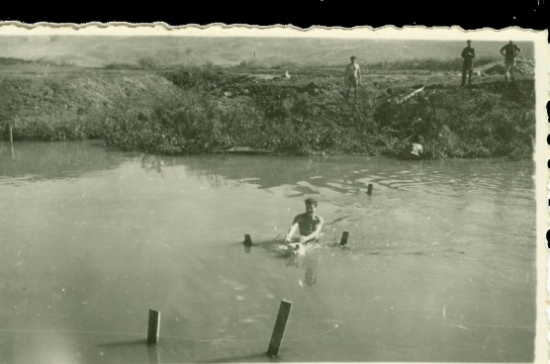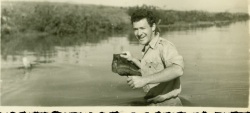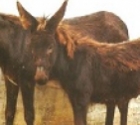
An israeli tiyul - 1960’s version
A rare sight seen in the far north of Israel during and just after the rainy season is lots and lots of flowing water.
Streams gurgle through lush green fields; small waterfalls rush recklessly down the Syrian mountainsides and cross the border; icy winds swoop and whistle down the Hula Valley from the snow-caps of the Hermon and the lesser mountains.
In the evenings, great flocks of birds swish noisily overhead and hide the blood-red sunset.
I was working on a tiny, newly established kibbutz, still struggling to stand on its own feet, when the rains came. Day after day we would wake up to a grey morning and the sound of rain beating on the huts, and roll over to sleep again. “No work today”.
Mud covered the land and the dirt roads and made walking and work impossible. Then it was easy to realize that the Hula Valley had once been a gigantic marsh stretching for miles in all directions between two mountain ranges.
In the early days of the state, a canal had been built down the center of the mosquito-ridden valley to drain the marsh, and this canal was full of water all the year round. During the rainy season, the stream became a torrent.
One Saturday, it stopped raining long enough to put one’s nose out of doors. Some eager kibbutznikim came to my door early, woke me up and asked if I would like to see the Hula Lake. The lake is all that remains of the marsh, and is home to the Hula birds and other wild fowl. It wasn’t far, they said, just a little tiul.
Being vaguely familiar with the language at the time, I guessed that a tiul was a walk of sorts. Stopping long enough to grab shorts, shirt, sandals, and a camera, I joined the group which included, among others, English-speaking “foreigners” and one Israeli girl.
We walked through wet fields and grasslands until we came to the drainage canal which had turned into a presentable river.
We foreigners looked around blankly for a bridge. The Israelis took off their shoes and waded across, chest-deep in water. I thought it was a bit much when one person stripped to a bathing suit, and swam across. Somebody could have warned us.
That was enough for the foreigners – all turned back to the kibbutz. After all, Saturday was a day of rest, and so forth.
The Israeli girl had gone across, and stood on the far bank laughing at those who were leaving. Somebody, I thought, had to represent her side.
I took off my shoes and waded into the water, which was ice cold. The girl is crazy, I muttered to myself, “You’re crazy,” I yelled. She didn’t understand, but I felt a bit warmer.
The day was grey and overcast though fortunately there was no wind, and it took a lot of walking before we stopped shivering.
I expected to see the lake around every turning. What I did see at the end of a field of corn stalks was the Dan River, a roaring, flood-swollen tributary to the Jordan. What I also saw was the Israeli delegation (all crazy) taking off their shoes once more and throwing them across to the opposite bank.
They dived in well upstream, and the current swept them several yards down before they could grab the rushes on the opposite bank.
It was a nervous moment for a poor swimmer, but I had a country (South Africa) to represent. Throwing caution, and myself, to the winds, I dived into the chilly water, thrashed about like a man on fire, and was finally dragged out on the far bank by the Israelis who thought the whole thing was a joke.
We saw the lake right enough, but the birds must have known of our visit and gone into hiding. So we walked around for half an hour looking at water and thick rushes, and then we returned.
We swam the Dan River (where ford there was none) and waded across the canal holding our shoes in the air and hoping there were no snakes swimming about.
Against the Syrian mountains, and watched by enemy guns, was the kibbutz – a collection of shacks and outhouses. That evening, it seemed a beautiful place to come back to.
An Israeli tiul is an awesome thing. No one could say I was not forewarned before going to the Hula. Once I had gone on a daylong tiul of three wadis,*lying one after another in a line, down to the Sea of Galilee.
The first wadi was a paradise of wild fig trees, grapevines, pomegranates, berries and a little stream. We ate as we walked and since it was early in the morning and the sun was not yet hot, we sang and were joyful.
The second wadi was more desert-like, and mysteriously the water had disappeared. The sun was high overhead, the dust floated into our nostrils from the dry sand, and there was no shade.
The tiul lasted 35 miles and ended in the third wadi, a huge rocky canyon with a tall rock column, which gave the wadi its name.
A tiul can also be a journey by bus or lorry. Once, a group of kibbutznikim took us on such a tiul. We went to the desert, bouncing on the hard seats in the back of a large, canvas-covered lorry for several hours. We camped near Timna, the ancient desert copper mine, and the next morning bounced back home. We didn’t sit down for some time after that.
In the future, if anybody mentions a tiul I will remain quiet and curl up tight in bed. These Israelis can’t fool me.
* Wadi is the Arabic term traditionally referring to a valley. In some cases, it may refer to a dry riverbed that contains water only during times of heavy rain or simply an intermittent stream. From Wikipedia


 Milestones 168
Milestones 168 “Be our Guest” at Beauty and the Beast
“Be our Guest” at Beauty and the Beast Advertisers List
Advertisers List A new website in English - on Volunteering - Launched in Israel
A new website in English - on Volunteering - Launched in Israel Help Needed for Abused Horses and Donkeys
Help Needed for Abused Horses and Donkeys Heather's Heseg
Heather's Heseg Mike Porter
Mike Porter